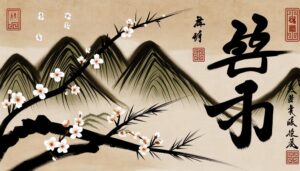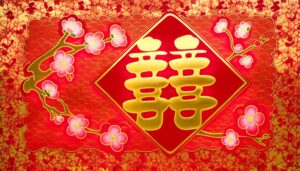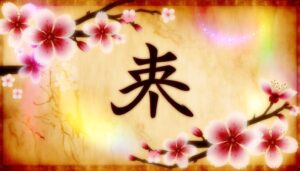Chinese Symbol for Being in Love?
The Chinese symbol for 'in love' (爱) has ancient origins, tracing back to the Oracle Bone Script from the Shang Dynasty (1600-1046 BCE). It has evolved to embody not only romantic love but also familial bonds, friendship, and societal ethics.
Intricately crafted in traditional calligraphy, it represents balance and emotional depth. Often misinterpreted in contemporary culture as solely romantic, it holds a broader cultural significance.
Classical literature and modern art, including tattoos, celebrate this symbol, reflecting admiration for Chinese heritage. Exploring its multifaceted meanings offers deeper insights into Chinese cultural and historical identity.
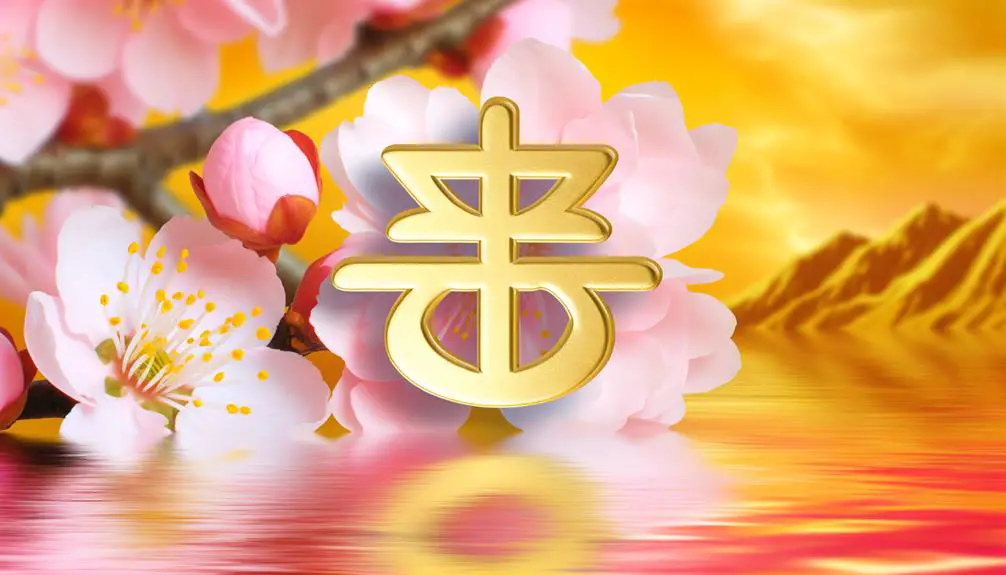
Key Takeaways
- The Chinese symbol for 'in love' is '爱', representing romantic and emotional connections.
- This character has evolved from the Oracle Bone Script, reflecting centuries of linguistic and cultural development.
- It signifies romantic love, family values, friendship, and broader societal ethics in contemporary Chinese culture.
- Traditional Chinese calligraphy uses intricate brush strokes to convey the emotional depth of being in love.
- '爱' is frequently depicted in classical literature and modern art, symbolizing the cultural richness of love.
Historical Origins
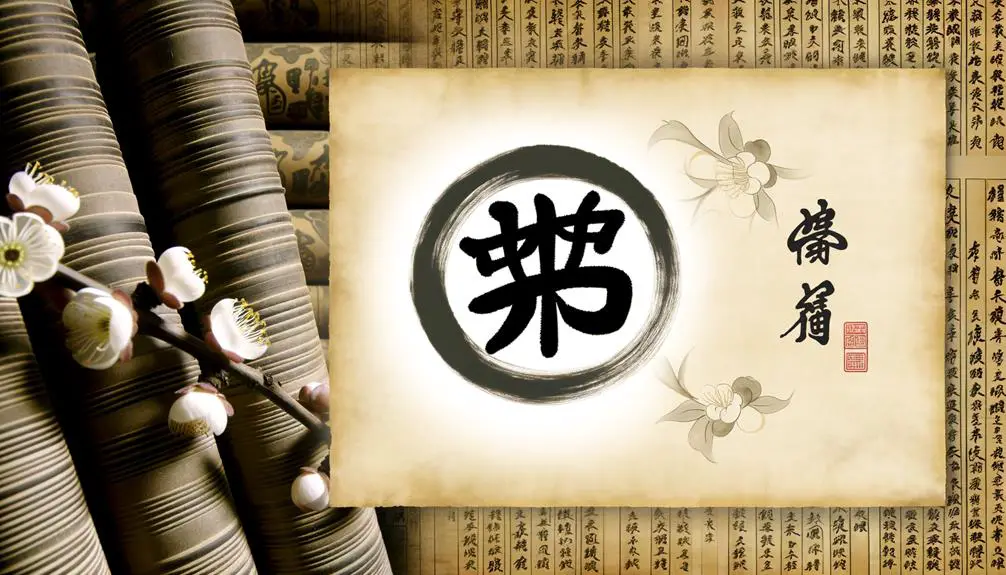
The historical origins of the Chinese symbol for love ('愛, 'ài') can be traced back to the earliest Chinese script, known as Oracle Bone Script, which was used during the Shang Dynasty (c. 1600–1046 BCE).
This archaic script, carved onto bones and tortoise shells, represents the earliest form of Chinese writing. The symbol for love has evolved remarkably over millennia, reflecting changes in linguistic, cultural, and artistic norms.
Originally, the character comprised elements that denoted feelings and actions, encapsulating the ancient understanding of love as an emotional and physical experience. As Chinese writing progressed through various stages—from Oracle Bone to Seal Script, Clerical Script, and finally Regular Script—the symbol became more stylized, yet retained its profound cultural essence.
Symbolic Meaning
The symbolic meaning of the Chinese character for 'in love' is deeply rooted in its historical context and evolution, reflecting its transformation over centuries.
Today, this symbol holds significant cultural importance, often embodying romantic and emotional connections in contemporary society.
However, common misinterpretations frequently arise, necessitating a nuanced understanding of its intricate layers of meaning and cultural resonance.
Historical Context and Evolution
Tracing the historical context and evolution of the Chinese symbol for love, one can observe its deep-rooted significance and transformative journey throughout Chinese history and culture.
Originating from ancient oracle bone script, the character '愛' has undergone various stylistic changes, yet its essence has remained intact. Initially depicted through pictographs symbolizing a heart and actions of giving and receiving, its classical form evolved during the Han dynasty.
The symbol encapsulates Confucian ideals of familial piety and benevolence, reflecting the societal values of its time. Over centuries, '愛' has been influenced by philosophical, literary, and artistic expressions, each contributing to its rich tapestry of meanings, thereby embodying both personal affection and broader humanistic principles.
Cultural Significance Today
In contemporary Chinese society, the symbol '愛' continues to hold profound cultural significance, representing not only romantic love but also a broader spectrum of emotional and ethical virtues. This symbol permeates various facets of life, encapsulating values such as compassion, loyalty, and filial piety. Its usage extends beyond personal relationships, influencing social interactions and community bonds.
| Context | Symbolic Meaning |
|---|---|
| Romantic Love | Deep affection and unity |
| Family | Filial piety and respect |
| Friendship | Loyalty and trust |
| Society | Compassion and harmony |
| Ethics | Moral integrity |
The symbol '愛' therefore remains a cornerstone of Chinese cultural identity, reflecting an enduring commitment to both individual and collective well-being.
Common Misinterpretations
Despite the profound cultural significance of the symbol '愛 (ài)', it is often subject to common misinterpretations that obscure its multifaceted meanings. These misinterpretations typically arise from a lack of understanding of the character's historical and cultural context.
- Simplification to Mere Romance: Many assume '愛' solely represents romantic love, neglecting its broader connotations of familial affection, friendship, and universal compassion.
- Overlooking Historical Context: The ancient roots of '愛' encompass a wide spectrum of emotions and duties, including filial piety and loyalty, which are often ignored in modern interpretations.
- Misuse in Popular Culture: The symbol is frequently appropriated in tattoos and merchandise without proper comprehension, leading to a superficial representation divorced from its rich heritage.
Understanding '愛' requires a nuanced appreciation of its cultural depth.
Traditional Calligraphy
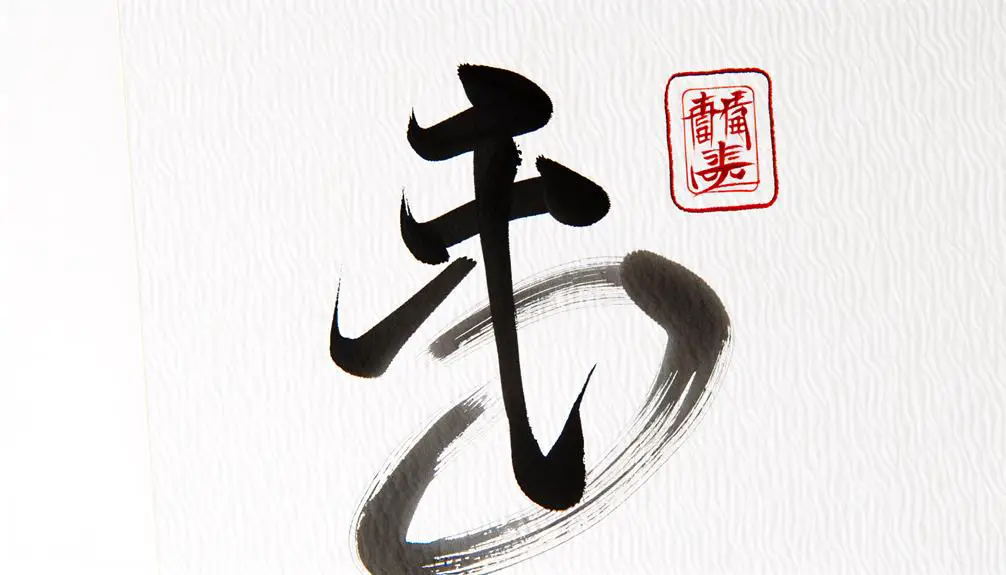
Traditional calligraphy, with its roots deeply embedded in Chinese history, offers a profound medium through which the complexities and subtleties of emotions, such as being in love, are elegantly conveyed. This ancient art form, dating back to the Han Dynasty, employs intricate brush strokes that not only represent words but also encapsulate cultural sentiment and philosophical depth. The symbol for "in love" is meticulously crafted to evoke the essence of this profound emotion, harmonizing visual aesthetics with emotional nuance.
| Element | Description | Significance |
|---|---|---|
| Brush Strokes | Varying thickness and fluidity | Reflects emotional intensity |
| Composition | Spatial arrangement of strokes | Symbolizes balance and harmony |
| Ink | Quality and texture | Enhances depth and richness of emotion |
| Technique | Precision and style | Conveys individuality and expression |
In understanding traditional calligraphy, one gains insight into the cultural and historical contexts that shape these timeless symbols.
Modern Interpretations
Modern interpretations of the Chinese symbol for 'in love' blend contemporary artistic influences with the rich heritage of traditional calligraphy, creating a dynamic fusion that appeals to both cultural purists and innovative artists.
This modern approach can be observed in various mediums:
- Digital Art: Artists utilize software to craft intricate designs, merging traditional strokes with modern aesthetics.
- Fashion: Designers incorporate the symbol into clothing and accessories, reflecting both cultural reverence and modern style.
- Tattoos: The symbol is popular in body art, symbolizing timeless love while embracing personal expression.
These adaptations maintain the symbol's historical essence while allowing it to resonate within contemporary contexts, demonstrating the adaptability and enduring significance of this ancient character.
Cultural Significance
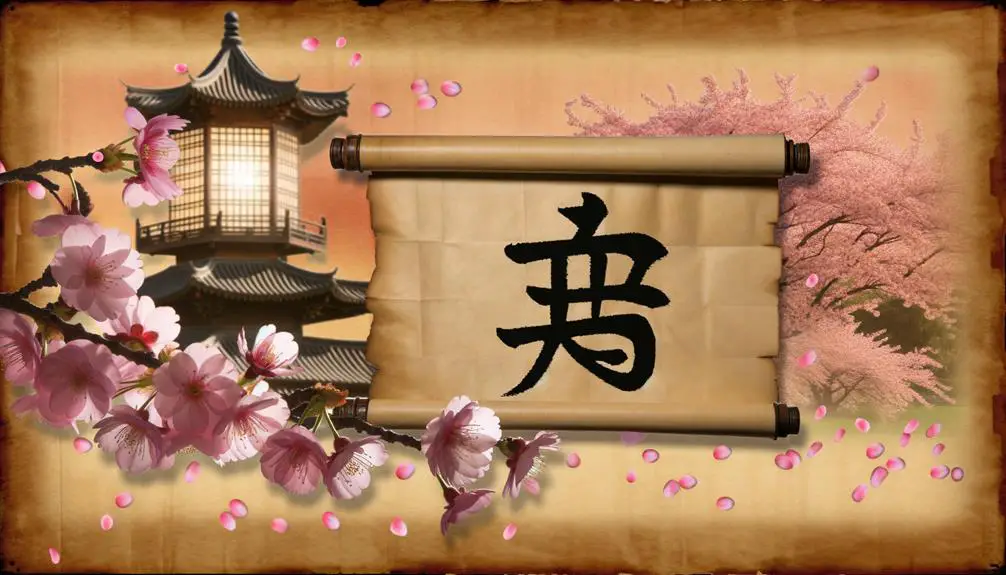
The Chinese symbol for love has a rich historical context that has evolved from ancient symbolism to a multifaceted representation in contemporary culture.
Its presence in art and literature underscores its enduring relevance.
Modern interpretations and usages reflect shifting societal values.
Examining these points reveals the depth of its cultural significance and the ways in which it continues to shape and express human emotion.
Ancient Symbolism in Love
Rooted deeply in China's rich historical tapestry, the ancient symbolism associated with love transcends mere romantic expression, encapsulating a spectrum of cultural values, philosophical thought, and social norms.
Ancient Chinese love symbols often carry multiple layers of meaning:
- Yin and Yang: Represents the dualistic nature of existence, emphasizing harmony and balance within love.
- Mandarin Ducks: Symbolize fidelity and lifelong partnership, often depicted as inseparable pairs in art and folklore.
- Double Happiness (囍): A traditional emblem used in weddings, signifying joy and matrimonial bliss.
These symbols not only reflect personal affection but also embody broader societal ideals, such as harmony, loyalty, and collective happiness. Understanding these symbols provides profound insight into the intricate ways love has been conceptualized across millennia in Chinese culture.
Modern Interpretations & Usage
Contemporary interpretations of traditional Chinese love symbols reveal an evolving cultural landscape that bridges historical reverence with modern-day relevance.
In modern China, these symbols, while retaining their ancient significance, are frequently adapted in various spheres such as digital communication, fashion, and literature.
The character '爱' (ài), denoting love, is not only a staple in romantic expressions but also a symbol of familial and platonic affection.
Its integration into popular culture, including social media and contemporary art, underscores a blend of time-honored values with the dynamism of present-day life.
This duality highlights the resilience and adaptability of traditional Chinese symbols, ensuring their continued resonance and significance within a rapidly globalizing society that values both heritage and innovation.
Symbolic Meaning in Art
Chinese love symbols, particularly the character '爱' (ài), hold profound cultural significance in the domain of art, reflecting both historical narratives and contemporary values. Artists have long utilized this symbol to express complex emotions and societal ideals. The character '爱' is often embedded in various forms of art, carrying a multitude of meanings:
- Historical Context: Traditional Chinese paintings and calligraphy often incorporate '爱' to convey themes of love and affection.
- Contemporary Values: Modern artists use '爱' in diverse media to explore and challenge contemporary understandings of love.
- Cultural Insight: Through its repeated use, '爱' contributes to a rich tapestry of cultural symbolism, resonating with audiences across different epochs.
This profound integration underscores the enduring significance of '爱' in Chinese art.
Usage in Literature
The symbol for 'in love' has been intricately woven into Chinese literature, serving as a profound representation of romantic and emotional connections throughout various historical periods. Classical poetry, such as the works of Tang Dynasty poets Li Bai and Du Fu, frequently employed this symbol to convey the depth of intimate relationships.
In prose, renowned novels like 'Dream of the Red Chamber' by Cao Xueqin utilize the symbol to illustrate complex romantic entanglements and emotional experiences. This symbol transcends mere linguistic function, embodying the cultural significance of love in Chinese society.
Through its recurrent appearance, it not only enriches narrative depth but also provides readers with a consistent, culturally resonant motif that underscores the universality of love across time.
Tattoos and Art
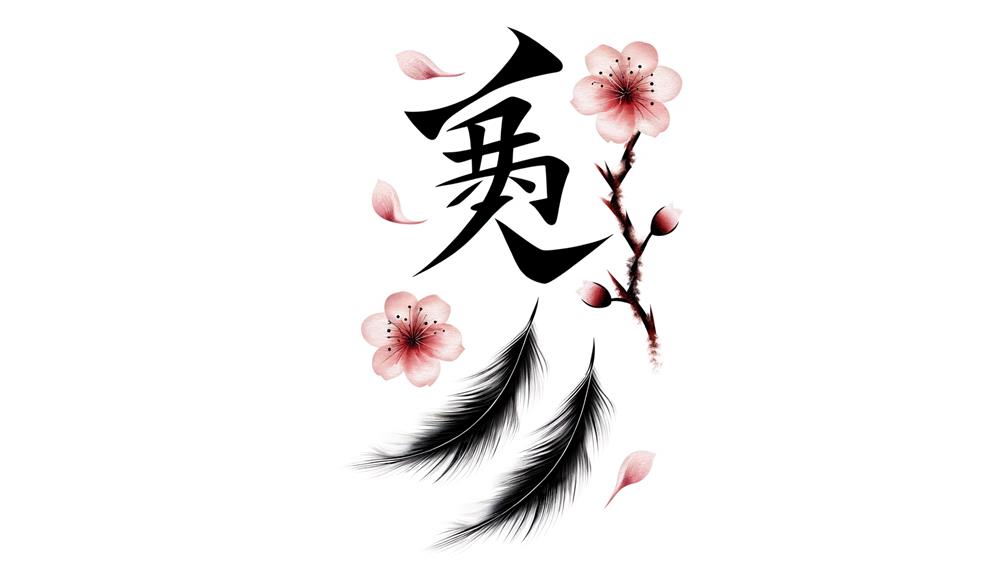
Beyond its literary significance, the symbol for 'in love' also finds profound expression in tattoos and art, where it serves as a tangible manifestation of personal and cultural identity. This ancient symbol encapsulates deep emotions and timeless tradition, making it a popular choice for individuals seeking to embed meaningful aesthetics onto their bodies or canvases.
Historically, Chinese calligraphy has been revered for its artistic beauty, and incorporating such symbols into modern art forms bridges the past and the present.
Here are three notable aspects of its usage:
- Personal Expression: Individuals often choose this symbol to convey their intimate experiences and emotions.
- Cultural Appreciation: It reflects an admiration and respect for Chinese heritage.
- Artistic Fusion: Artists integrate the symbol to create works that blend traditional calligraphy with contemporary styles.
Conclusion
The Chinese symbol for 'in love' embodies a rich tapestry of historical origins, symbolic meanings, and traditional calligraphy. Modern interpretations and cultural significance continue to breathe new life into this ancient character, illustrating love's timeless resonance. Its usage in literature and prevalence in tattoos and art exemplify love's universal appeal.
Indeed, this symbol stands as a proof of love's enduring power, proving that 'love conquers all' across both time and cultural landscapes.

